Juan Ramírez Pérez, artisan, Santa Lucía de Tirajana interview conducted by @loretosocorro
We move to the very center of Santa Lucía de Tirajana to spend the afternoon with the last basket of reeds and cattails. His sister Concha welcomes us, who while opening the door is dynamic, cheerful and friendly. The workshop is a room that is next to the house, surrounded by bushes and flowers among which the blue enchantments stand out.
Juan, you are a basketmaker and a potter, what do you prefer?
I liked clay almost more than vegetable fibers, but the heat could. There are three hours of fire in the oven that I have back here ... The most I did were idolillos and pintaderas on request.
In an outdoor corridor, next to the workshop, we see a drying room where we stop with Juan Ramírez who is explaining to us about the fibers.
In the pools of water in the ravine is where I look for most of the raw material. Here are now rush, cattail, rye, flax and palm.
Do you already have the areas of the ravine located to go direct?
And the eye made, to capture if they are to catch or not, if they have fiber or if, on the contrary, they are very tender. Is that if it is tender garlic, it dries too much. The cane basket makers said that the green cane ajillaba and they didn't catch it.
Is there still enough in the ravines?
Yes there is reed and cattail. Before it was caught for animals but nowadays there are no animals or basket holders or anything; Well, I go back where I left the cut and there I always have. Then there is the job of bringing it from the ravine to the workshop.
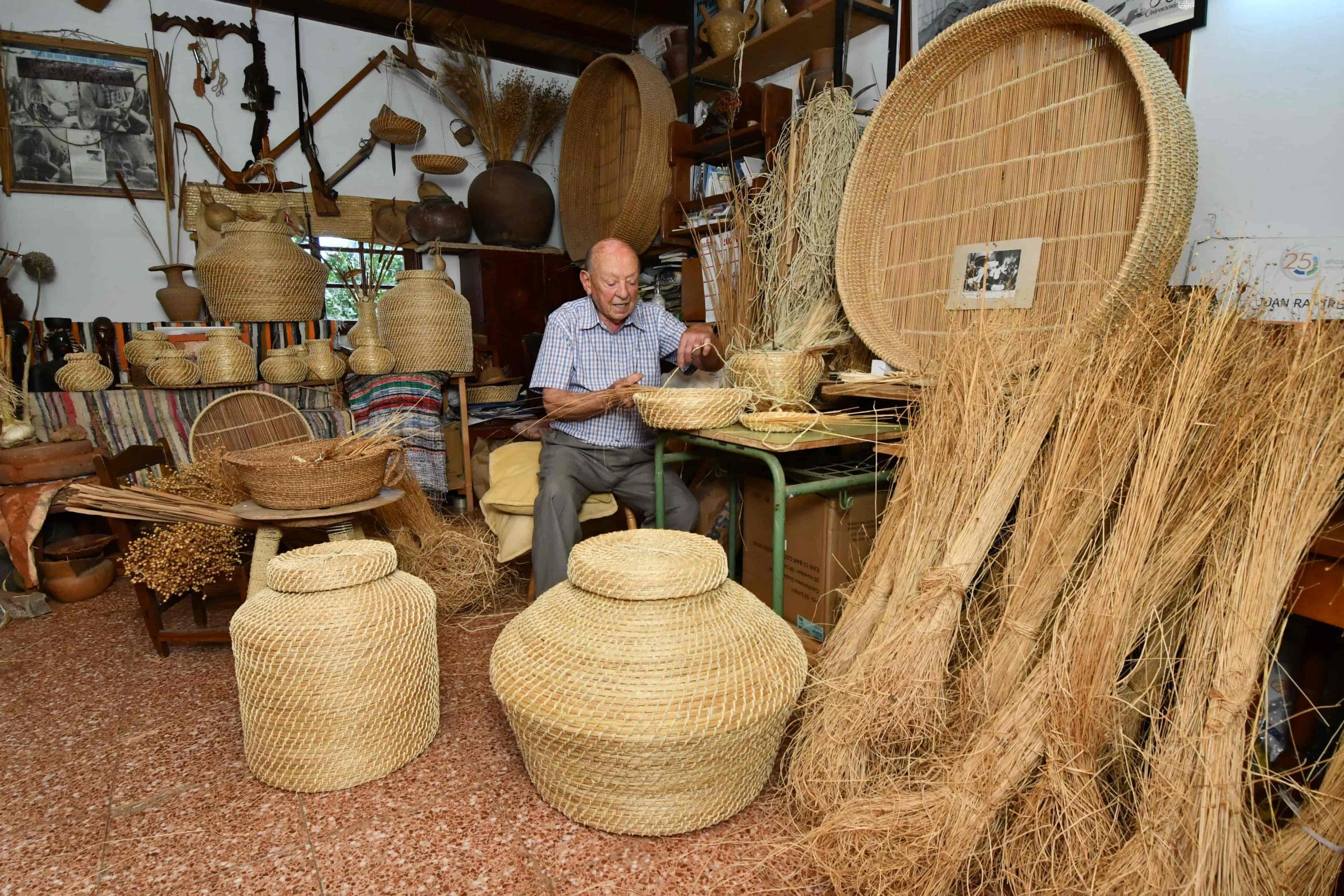
The craftsman continues pointing to the fibers of the dryer
This is reed. The outer shell is removed from each reed bush and everything is fibers, from top to bottom. For this reason, the Guanches wanted this material for their suits, for tamarcos and also for tabuetes (bags).
Do you plant the flax yourself or do you buy it?
I grow it myself, in the pit ... look at what ...-squeezes and blows out one of the sticks, exposing the flaxseeds in the palm of his hand. Go, this is where the flaxseed comes from. And the fiber of the flax is extracted to make the linen cloth. First I sow it and after drying I leave it in water for ten or fifteen days and later I have to pound it and rake all the garbage from the outside. So it stays like wool. Flax is the only fiber that I plant, I will look for everything else in the ravines.
How did you get started in crafts?
Out of necessity, as a child in school I liked to paint and study a lot, but there were ten of us here, at home, and you couldn't study. If I could have, at least teacher, I would have liked. When I was at Berriel, working in the packaging warehouse, I was teaching. I was a listero for five years, that is to say that I was going through the roll call to the workers who worked, and after work I gave classes: from 6 to 8 to the boys and from 8 to 10 to older people. He taught them the 4 rules: write, read, add and subtract.
Was he learning the trade of basket maker out of necessity?
At first, with my grandfather, I used to make farm implements and carpentry things with him, but one day with the chisel I had an accident and they gave me nine stitches on my hand and I didn't want to work with wood anymore.
My grandfather also worked the pita, with this stone he crushed it. You have to have strength to be able to rub on the board with this stone that weighs a lot. I also did not become fond of that fiber because it was very stinging.
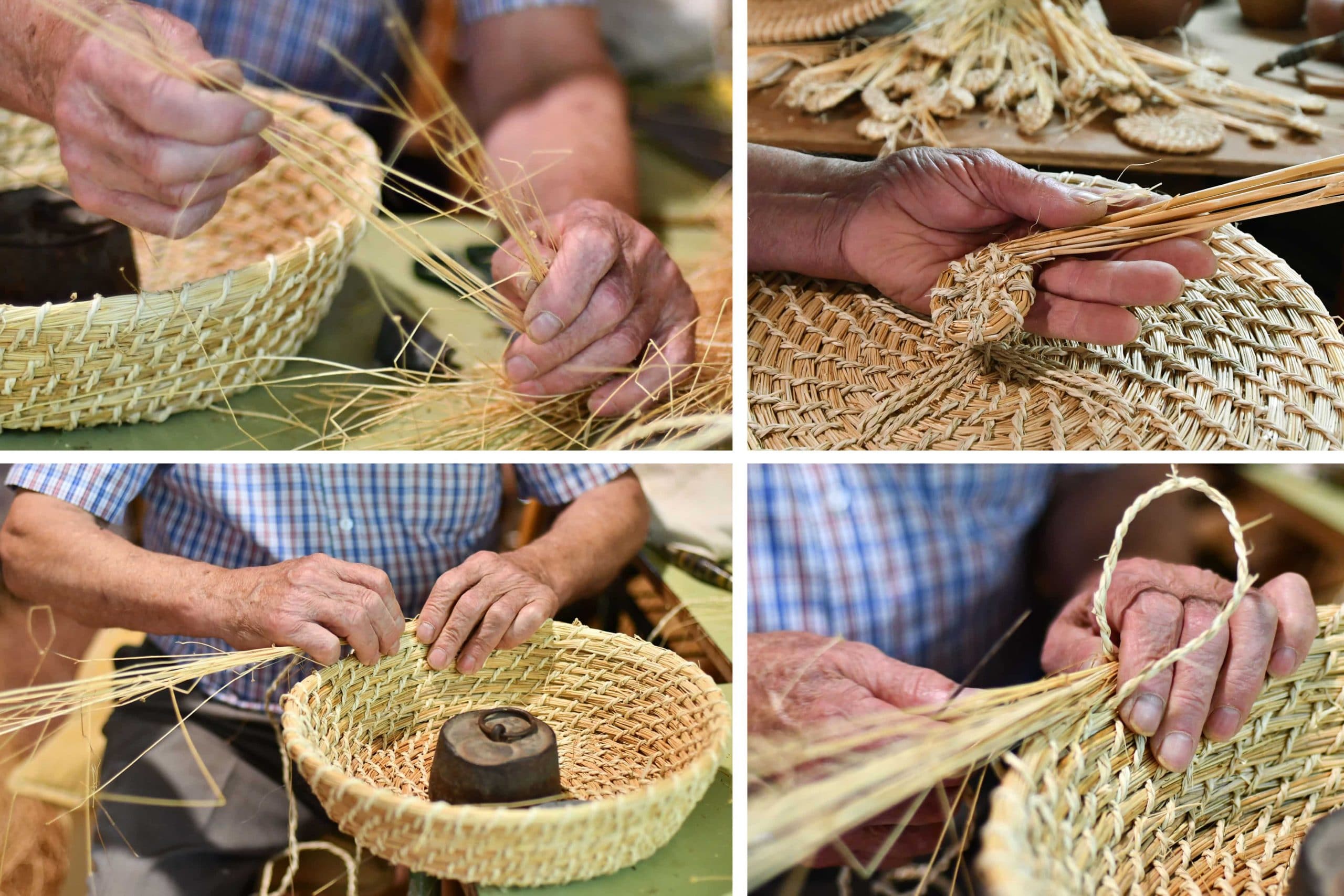
Was it normal for everyone to have some craft trade?
In general yes. These days I started to think about how all this was full of artisans. Orders were made to them for after the tillage: mats, stone baskets and large mats with 4 fins were also sold, to export the salted fish. They did a lot of things, but very cheap. My mother knew how to sew but to survive she had to make mats, which was what she was commissioned to do and I would make the tomizas and I had to make them finite to hem the entire mat.
Did she teach you?
No, I was just doing the takings. I learned this on my own. I went to the Canarian museum and looking at pictures I was making my little drawings. I would look closely and sometimes, as I got closer, I would hit my forehead with the glass of the display cases.
While a rooster sings to the sound of the camera's click, Juan sews tomatoes.
These tomizas that I have sewn here are already the beginning of something, which can be a balayo, a sewing basket with 2 or 4 handles ... you can do many things. With one hand he sews and with the other he feels. This finger is calculating the thickness. These twigs are made of linen and must always have the same thickness, the length does not matter but the thickness must be the same. I am calculating as I do and I am feeding it with more twigs, little by little. When it is finished it is cut and finished.
Does it end anywhere?
You have to look for the starting mark, to end where you start, because if it does not stay higher on one side than on the other.
How do you tie one with another?
I go through the thread and the one that remains loose I cut it. The tomizas are long strips, which at the beginning and end are even thinner, to be able to thread the needle. My sister Concha gives me good sewing lessons -post while laughing-.
Have you always been in the Federation of Artisans?
I have been since before the FEDAC, when the Ministry of Culture and the director was Don Maximiano Trapero.
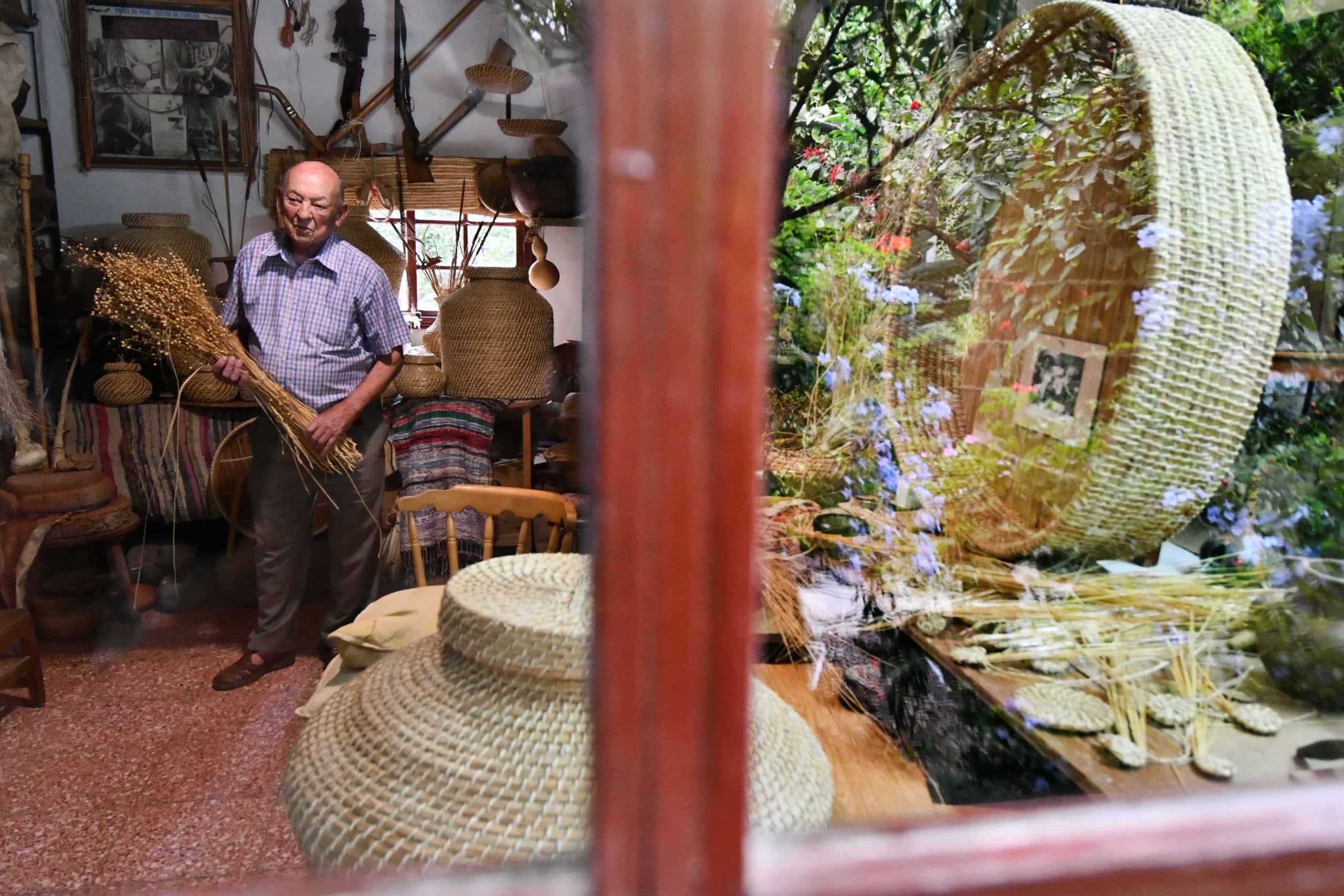
How was it that you were encouraged to get your craftsman's license, in those days?
One of my brothers set necklaces and was a chandler, made wax candles, and told me to get my license. That he had it too.
The ceramic card was the first one but they changed it and one day they suggested I take a course in San Bartolomé and, I did not refuse, but I told them that I no longer had the clay card and, right away, they did it to me again.
I have one for working with clay and another for a basket maker.
If there are people interested in learning about plant fibers, how can they learn?
I don't teach here, but if the FEDAC or the City Council organize a workshop, they can sign up. Today there is a pending course that could not be done last year. I have given many courses in San Bartolomé y Vecindario with the FEDAC and it is good that people learn, so that they do not miss this.
In the end, in addition to being a craftsman, he has also worked as a teacher, at least of handicrafts.
I have given many courses in basketry, clay ... There are always people who learn slower and others faster, but everyone who comes to the courses is interested.
I like to give courses, take a sample of what I do and also speak in schools. Sometimes they have come here, the children would sit in front of me, I would talk to them about what this is and they would ask me a lot of questions.
You collaborated for a cartoon series, right?
The Cabildo made this series so that children can learn about Canarian handicrafts. When they came to record they told me to talk looking over there -He points right in front of him- And when I saw it on TV, the drawings were already included and, to be honest, it turned out very well. I liked it a lot. The series is called "Sara and Darmo" and I recommend that you watch it.
And have you given workshops in the north of the island?
No. Although in the Nature Classroom of the Tederas there was a workshop of several days, with coexistence and everything, of people from the Labor University of Los Sauces (La Palma). I brought the material and taught them. When I do workshops like this I usually take the beginning, I have them made to speed up, but with interest they end up learning.
What are the principles?
Well, the round bottom that is made at the beginning. This is where the work begins and is usually the hardest.
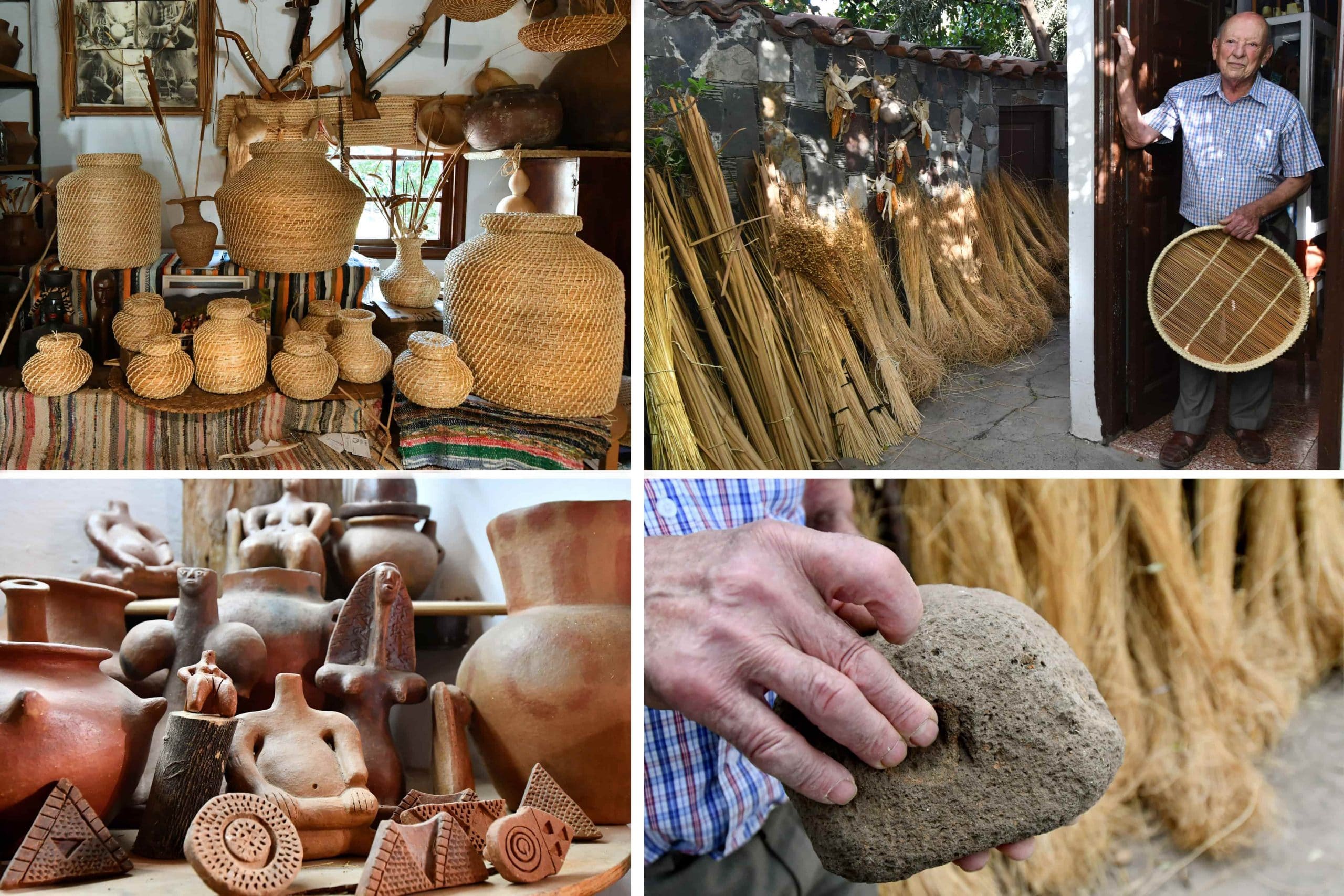
How long does it take you to make a medium size basket?
I do not know why I am doing one thing and I go on to do another ... but a basket has been working non-stop for about 6 days, if it is more it is not profitable.
When do you make orders are to use as decoration?
They are for decoration, but before they were for service. The taños and balayos were used to fill them with wheat, the cheeses were put inside ... One day, I don't know what I heard, some balaya and when the woman is on tape and is told go balaya what do you have and it is because the belly has that rounded shape of the basket.
Sometimes at fairs there are those who tell the kids watch to save snakes, because it reminds them of the baskets of the charmers who play with the flute to call the snakes, but for me they do not look alike ... And I tell them that if there is a snake inside I give them the basket and the snake too.
Why such a huge sifter?
They are sarandas and no one makes them but me alone. They are used for the peasant dance. Formerly they were so little -shows one on his back- And when they commission me today they are for dancing in a group and they become great.
Juan Ramírez shows us a photo where a young woman appears with a skirt made by him for Mundo Aborigen
I did everything about the Aboriginal World and in Tenerife they commissioned me to do many things for an exhibition.
This skirt in the photo is made of palm. The finite spike, I take the palm leaves two by two, I chip them with a needle because with my nails it ends up being uncomfortable and that's how I work the palm. This is called fiddling.
Tell us about the fairs in which you have participated, also take the opportunity to publicize your trade?
I like to talk about this and I have been to Cuba, Madrid, Segovia, Lugo, Barcelona… I have walked a lot with the FEDAC, to show my work and Canarian crafts. I have good memories of the one in Pinolere (La Orotava) where I won the first prize from 32 countries. Now everything has stopped but the FEDAC invited me to the Regional Fair of Tenerife in December.
He has also taken his work on a pilgrimage to El Pino on occasion.
With Pedro Grimón I went four times in the Pino floats. One of those times they brought a workshop of this in the float and I went inside making a huge basket.
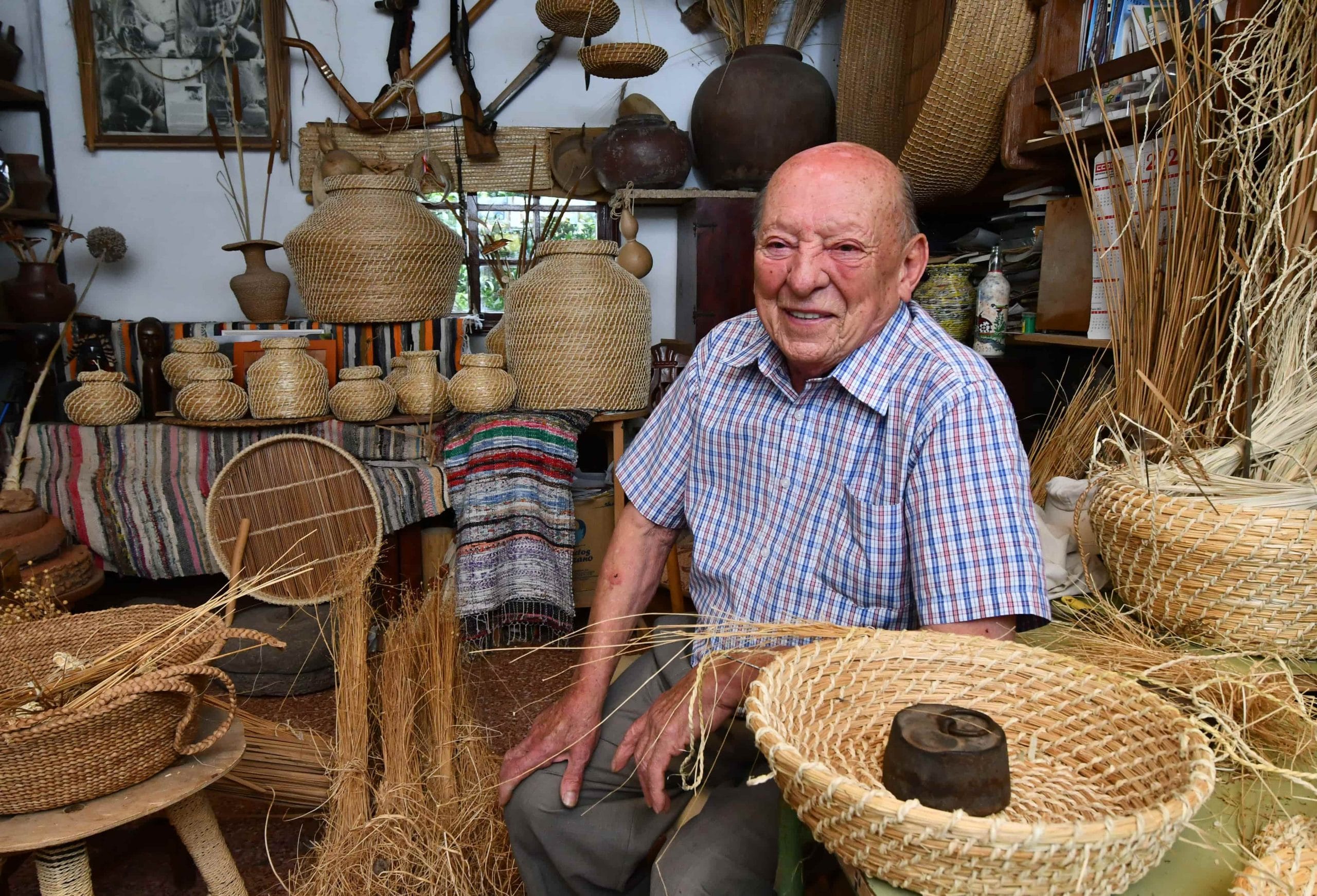
Is the knowledge and work of your hands spread all over the world thanks to the craft fairs?
Much for the fairs and also for the tourists who come here and look for me ... my crafts are spread over many countries.
Is artisan work hard?
The first thing to be clear about is that you have to like sitting here all day. There is a lot of homework because you have to go get the materials. I go to the ravines or plant the flax. I blot it, dry it ... All that before I start creating. And spend many hours on it.
Since you get up, are you already working with the fibers?
Not today. The first thing I do is take care of the rabbits, the pigeons ... I get into the field to plant and take care of the crops. This year I planted many peas and they grew very large, without almost watering them. Then I come to the workshop and spend many hours here. The worst time was when I had to pay for the self-employed insurance, which was twenty-four thousand pesetas, and the month was leaving me right away. Even at night, when I was in a hurry with an order, I would come to the workshop to work. My brothers watching TV and I in the workshop, with the only radio company.
How are the hands of a craftsman?
It is the main thing, you do not work with something else. The hands of a craftsman are like this -shows us firm, open and powerful hands due to the traces of work- These hands have worked and not only in this, but also as a sharecropper with 16 years, I made 4 harvests in the Balos ravine, where I was also a listener as I told you before. After the tomato growers, I went to Las Palmas de Gran Canaria to a coffee roaster and there all the jobs went through my hands: roasting, grinding, packing ...
In mud, have you done other creative things?
No, I didn't like anything but idols, paints and everything as they are. I don't like to invent. I went to the Canarian museum, I took a good look at them and made them the same.
I learned alone too. He went hunting in the caves where the Ansite Fortress museum is now and when he saw things made of clay he would observe and investigate them, to know how it was made, what percentage of sand it had ...
Juan Ramírez was learning in a self-taught way and with great interest. He says goodbye to us with the same affection with which he welcomed us and we thank him for keeping alive the ancestral art of the reed and cattail, as well as the desire to teach all the people who want to keep this craft alive.
Thanks to Juan and his sister for their cordiality and simplicity.

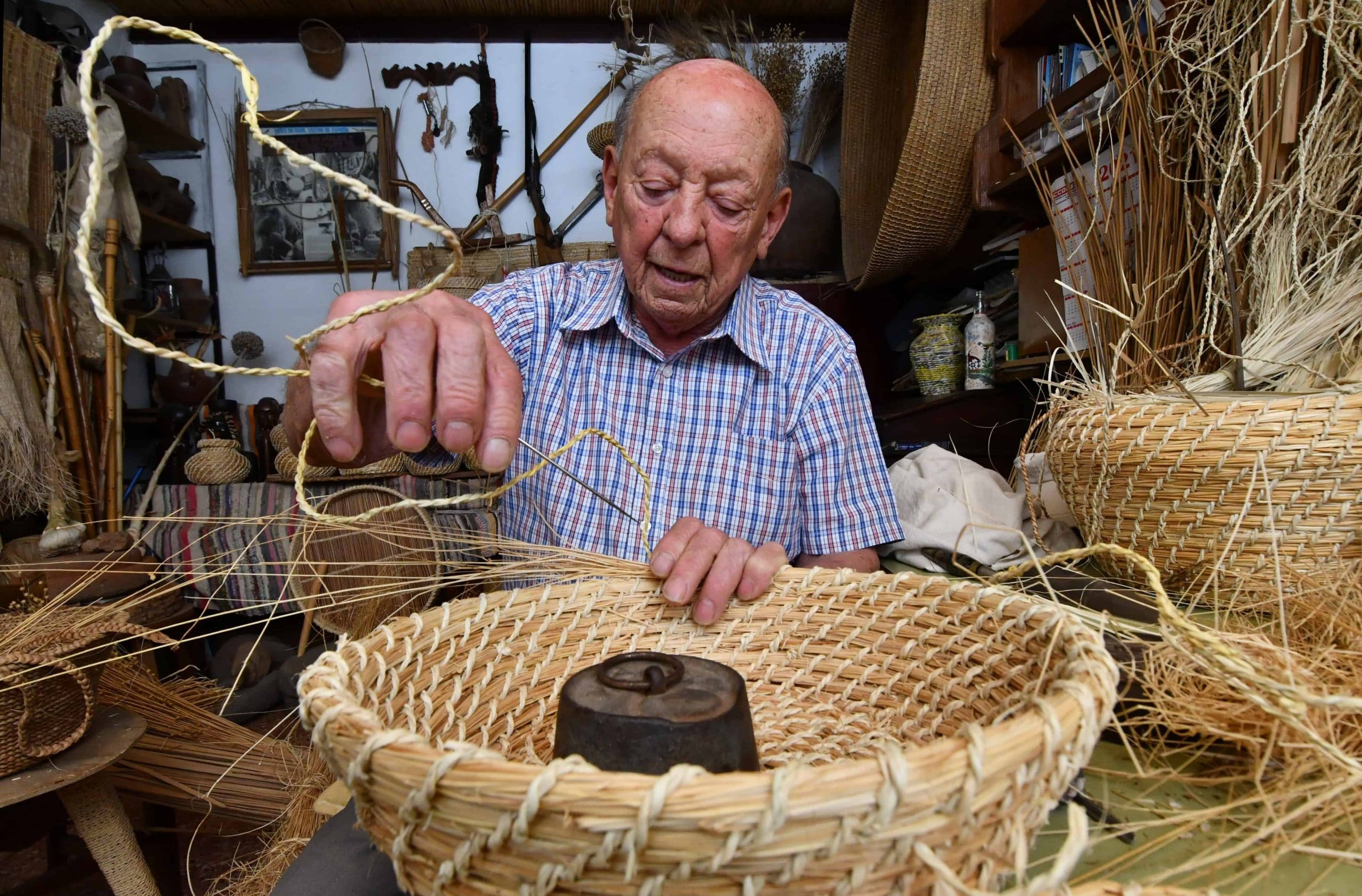
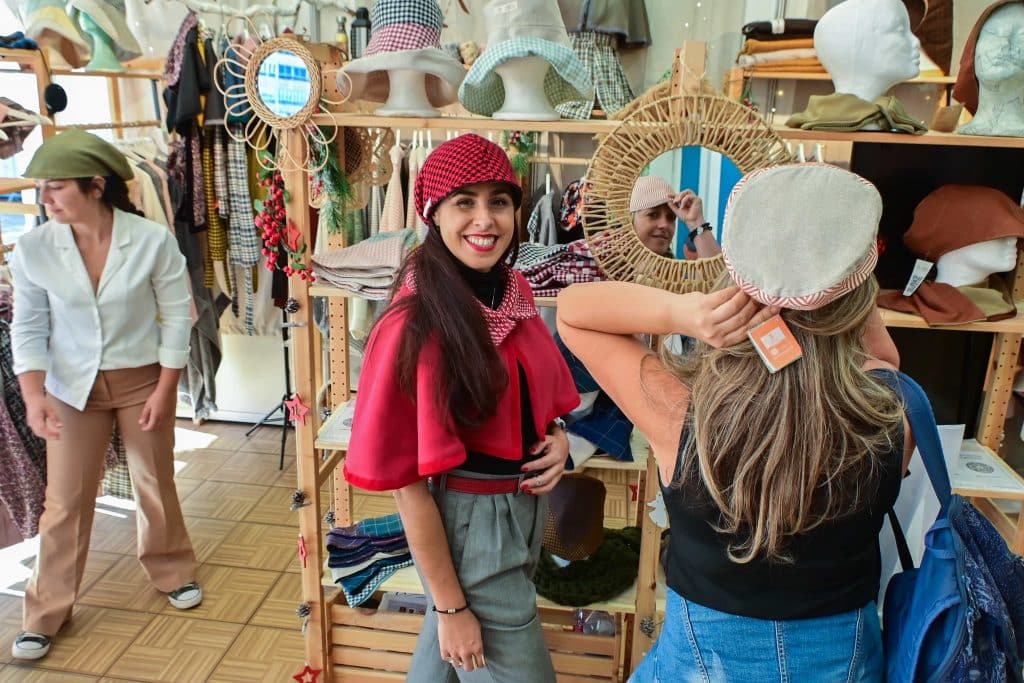
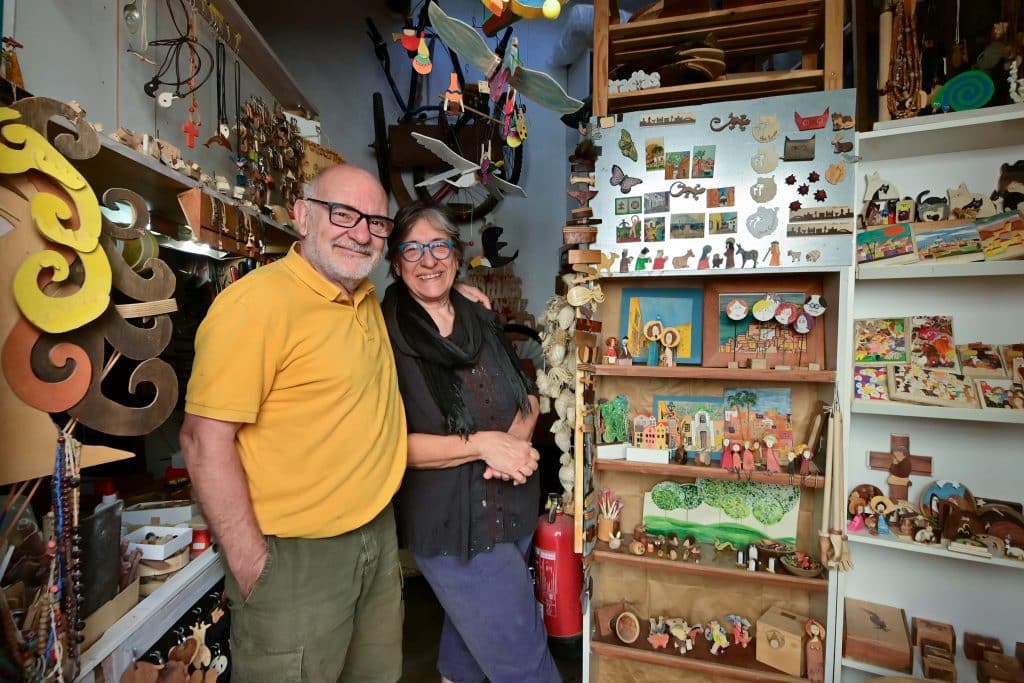
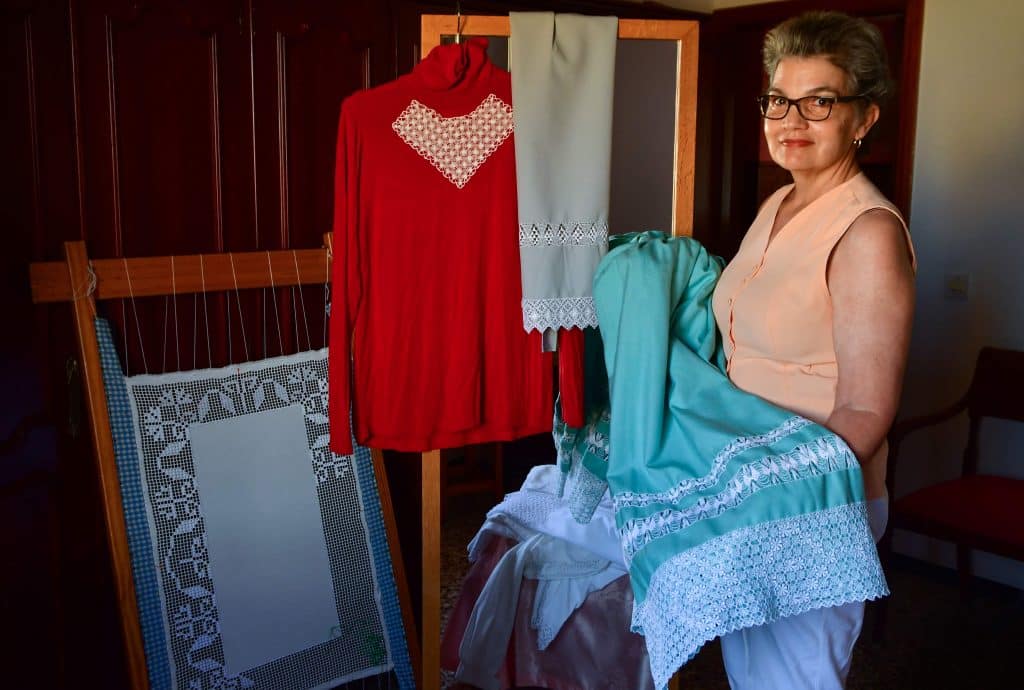
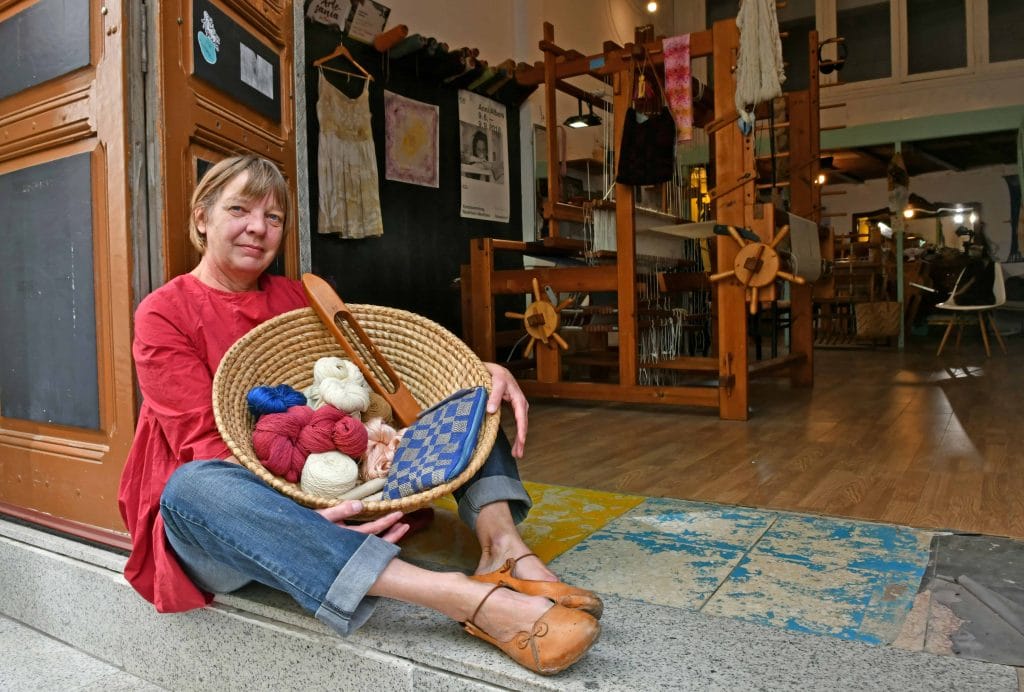
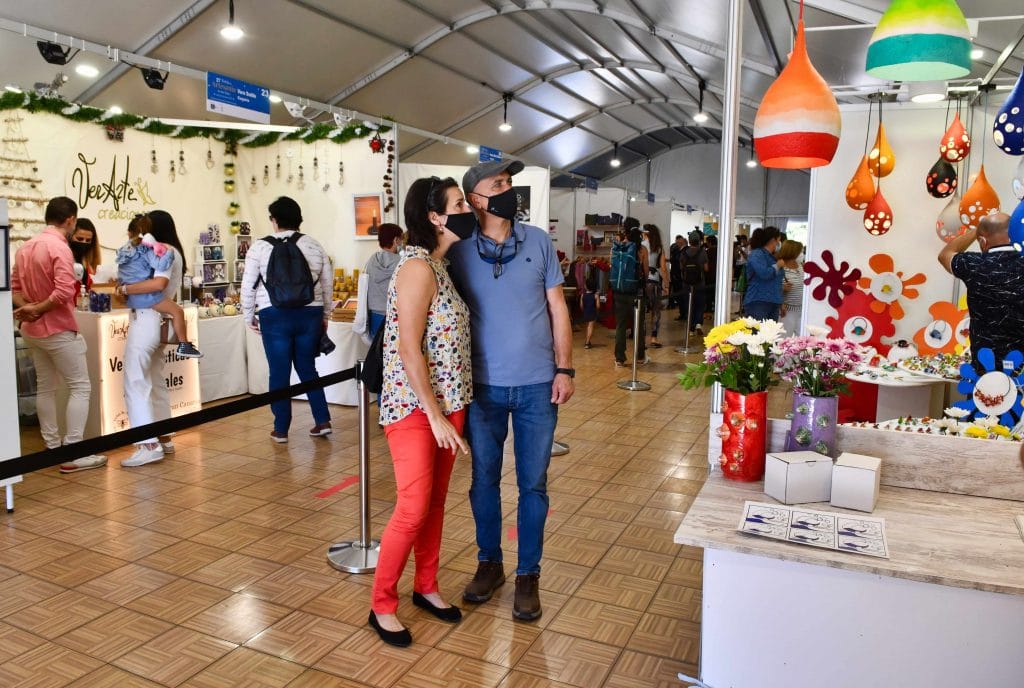
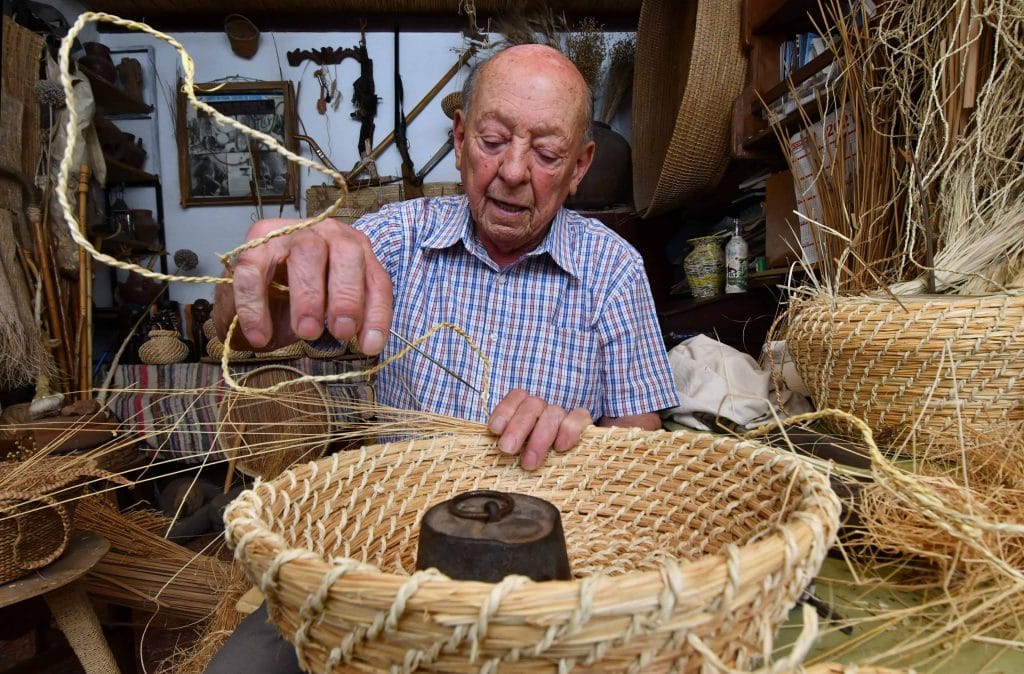
2 comments on "Juan's hands"
Wonderful interview. You would like to meet him in person and visit his workshop
Thanks Pilar, this man is a living jewel. Thanks for reading Get Out of the Atlantic.